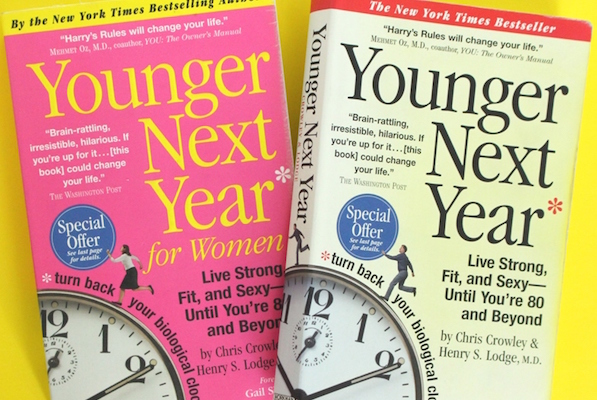
We Attended Vision Expo (East) 2019 – Here’s What We Learned
Vision Expo is "the complete event for ophthalmic professionals, where eye care meets eyewear and education, fashion and innovation mingle."
Vision Expo continues to steer the eye care industry in a steady direction as the first quarter of 2019 comes to a close. This past weekend, the conference came through New York City riding an uptick in participant registration across several key categories. More than 7,000 relevant companies were in attendance as the latest in fashion, technology and education were on display. To add to the excitement, Common, Lilliana Vasquez and Shaquille O’Neal were among the celebrity sightings.
While it’s impossible (at least for us) to relay every important piece of information from a large scale event, we do our best to force our way into the conversation. That said, here are some things we noticed at Vision Expo this year.
Quantifying digital eye strain?
In an effort to educate the public about digital eye strain, The Vision Council revealed the results of a VisionWatch survey designed to quantify the health consequences of digital device use. The report revealed that nearly 80 percent of Americans use digital devices for more than two hours per day. Of that amount, 59 percent said they experience symptoms of digital eye strain. The common symptoms and percentages were as follows:
- Eye strain – 32.4 percent
- Dry eyes – 27.2 percent
- Headaches – 27.7 percent
- Blurred vision – 27.9 percent
- Neck and shoulder pain – 35 percent
Dr. Justin Bazan, a medical advisor to The Vision Council, offered some advice: “The good news is that there are eyewear solutions… available to help alleviate the symptoms of digital eye strain.” But as good as his advice may sound, still 69 percent of American adults claim to not know about the availability of eyewear that could protect their eyes from digital eye strain. Furthermore, 87 percent report not knowing about available contact lens solutions.
(Pre)-screening patients for dry eye
Dr. Jason Miller spoke about various technical topics related to contact lenses at Vision Expo, but it was his common sense advice about administering the Dry Eye Questionnaire in the waiting room that grabbed our attention. In regards to using all available information in evaluating patients, he said: “Give your patients the Standard Patient Evaluation of Eye Dryness (SPEED) while they’re waiting to see you; it gives (patients) something to do.”
Interestingly enough, sometimes simple solutions work best. A small action like Dr. Miller’s suggestion could allow patients become more engaged during their visit to the eye doctor. All too often we see patients reading the newspaper or magazines, or watching television while they wait for an eye exam. Handing out the Dry Eye Questionnaire seems like a non-pushy way to help patients become proactive about their eye health concerns. Moreover, it puts more information at the fingertips of doctors who prefer to gather as much data as possible.
An eco-friendly template of accountability
Here’s a (not so) fun-fact: Did you know that the optical industry disposes an estimated 420 million plastic lenses every two years? Well, we didn’t either. In fact, not only were we shocked to come across this statistic, we were quite a bit repulsed. To state the obvious, this absurd number seems overwhelming, let alone extremely wasteful and harmful to the environment.
To combat the problem, the California-based sustainable eyewear brand COSTA launched the Kick Plastic Lens Recycling Program. “Our lens recycling program is a tangible way we can all work together to create meaningful change… this will allow us to recycle and repurpose over 50 tons of plastic lenses,” said Costa CEO, Holly Rush.
One would obviously have to admire Costa’s efforts to cut down on waste, but we can’t help wondering how this problem spiraled to the point it’s at now. Moving forward, we hope other optical manufacturers and eye care organizations can participate in Costa’s program and/or follow their lead.
A peek into the future of Ocular Telehealth?
The aforementioned Vision Council also revealed numbers from another VisionWatch survey exploring consumer perception and usage of ocular telemedicine. The group defines ocular telemedicine as “services referring to smartphone apps, websites, online or remote platforms that provide vision or eye care services that a consumer would otherwise receive by an on-site, in-person eye doctor.”
Out of more than 10,000 survey respondents, the following numbers were compiled:
- 75.2 percent of respondents were completely unaware that ocular telemedicine services exist.
- Of the remaining 28.4 percent who were aware of ocular telemedicine services, 12.9 percent actually used the services, which represents 3.2 percent of the overall sample.
- 78.2 percent of respondents who used ocular telemedicine services were satisfied with their choice (50.6 percent were extremely satisfied).
- 73 percent were likely to use these platforms again (49.1 percent being very likely).
- Of the respondents who never used ocular telemedicine platforms, 26.3 percent sited a lack of awareness as the main reason for non-use, while 22.2 percent sited a trusted relationship with their current eye doctor.
While these numbers tell a relatively new story in eye care, consumer preferences will continue to be shaped by several factors including (but not limited to) quality of service, ease of access and comfortability levels. As always, some consumers are more inclined to technological advancements, while others prefer personal interactions. In the free-market, consumers have choices and will typically opt for services that better fit individual needs. That said, if ocular telemedicine proves to be a game-changer in the industry, it will happen because a useful service correctly identifies and disrupts the right segment of the market. Unfortunately, this process is always much easier said, than done.
Live in Your OcularPrime… until next year.
VisionMonday (1, 2 and 3) and PCONews were used as sources for this article.





